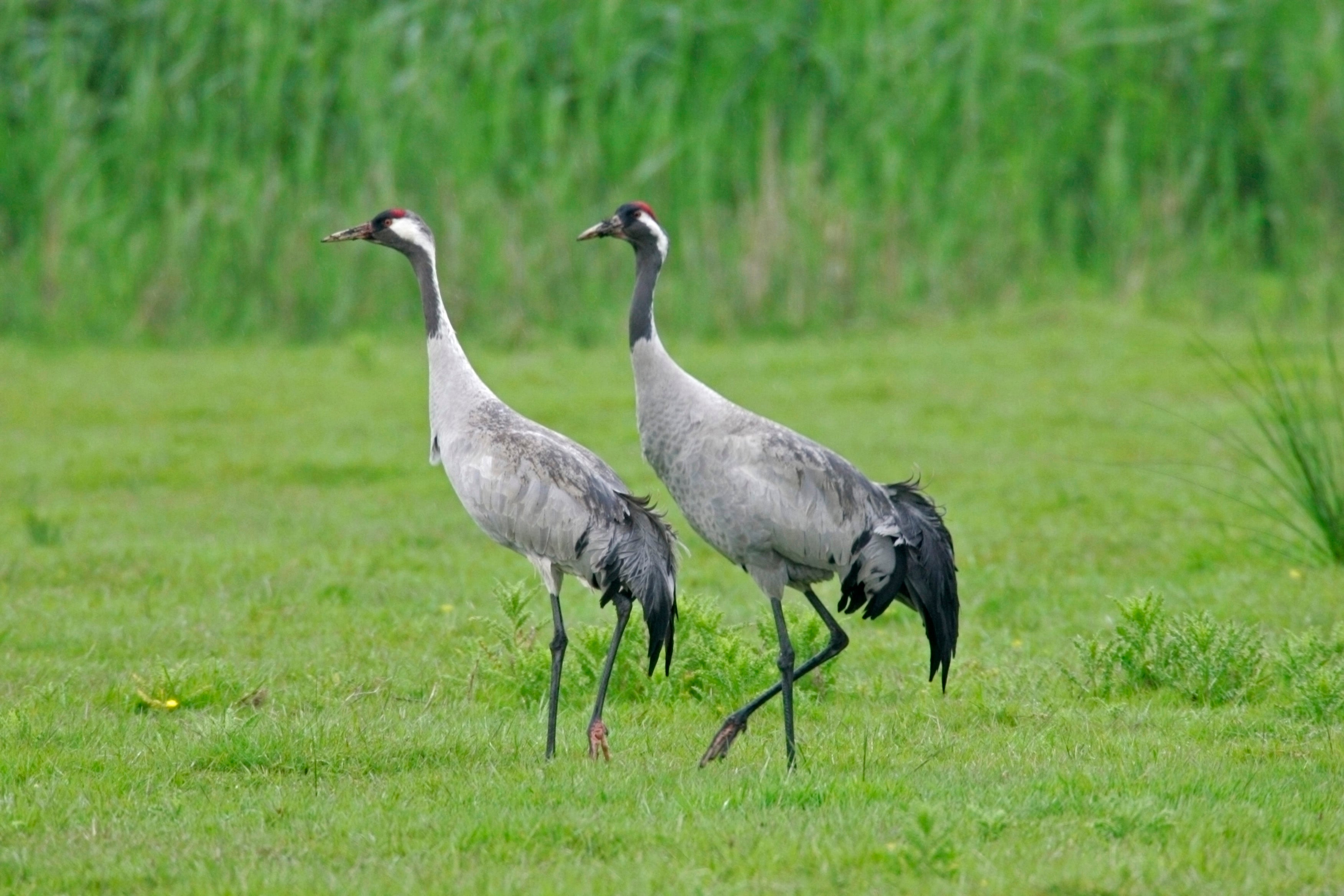UK crane population hits highest level in 400 years
Species ceased to exist in 1600s due to hunting and severe habitat changes but have since made a comeback, writes Sam Hancock


The number of cranes inside the UK has reached an all-time high since the species became extinct here 400 years ago, a survey has revealed.
The research from 2020 – shared by the Royal Society for the Protection of Birds (RSPB) on Monday – found 64 new pairs living across Britain, which produced 23 chicks, bringing the total UK crane population to more than 200.
Cranes, which stand as tall as 4ft, went from being commonplace to non-existent here in the 1600s due to hunting and a decline in their wetland habitat.
But the natural return of some wild birds to Norfolk in 1979, and conservation work such as restoring peatland, protecting wetlands and a reintroduction programme, has helped the species “make a return,” wildlife experts said.
More than half of the cranes fledged in the UK since 1980 have been born since 2015, making the last five years particularly productive, they added.
The process was laboursome and only made possible by a number of key initiatives, including 2010’s Great Crane Project – a partnership between the RSPB, Wildfowl and Wetlands Trust and the Pensthorpe Conservation Trust – which began creating and improving existing habitat, as well as hand-rearing young birds for release on the Somerset Levels and Moors.
Nature reserves also played a vital role, with at least 85 per cent of the crane breeding population being found on protected sites, according to the survey.
However, experts have noted the success is largely down to the “resilience” of the natural world.
“The return of cranes to the British landscape shows just how resilient nature can be when given the chance,” Damon Bridge, chairman of the UK Crane Working Group said.
“If we want to see this success continue then these sites that cranes use and need must get adequate protection.”
Andrew Stanbury, RSPB conservation scientist, added: “If we want to see this amazing achievement repeated across the UK, governments must take action to designate the most important sites for this iconic species as part of the UK's protected area network.”
Looking to the future, conservationists said they wanted – and expected – to see strong protection for wetland habitats in the UK where cranes make their home, and which support a wide range of other wildlife, as well as providing protection from floods and storms and storing carbon.
Hailing the new figures as a “milestone”, Stephen Prowse, from the National Trust, said: “This is a significant milestone for cranes in the UK. With a focus towards more habitat creation in the future, we hope to see the fortunes of these amazing birds continue to improve”.

Join our commenting forum
Join thought-provoking conversations, follow other Independent readers and see their replies
Comments